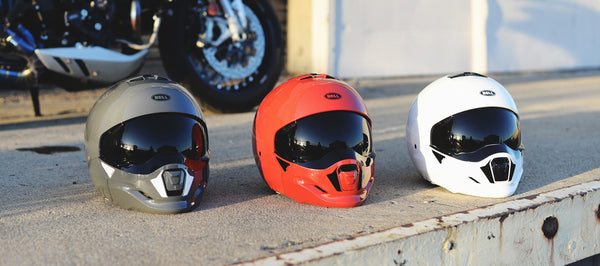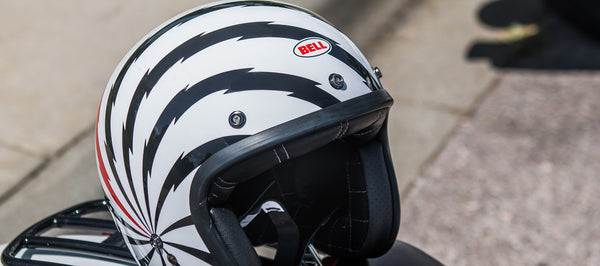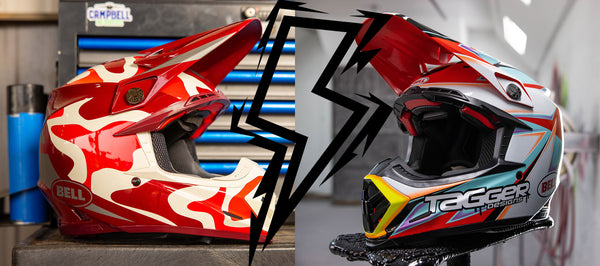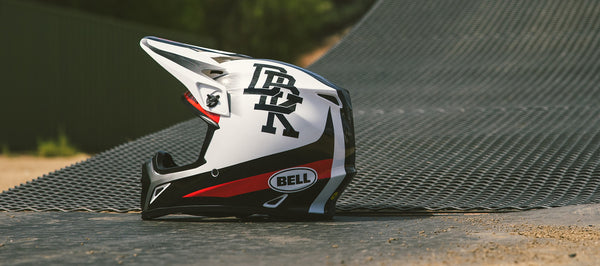
Type of Motorcycle Helmets
Exploring Different Types of Motorcycle Helmets: A Comprehensive Guide
Are you gearing up to hit the road on your motorcycle? Before you rev your engine, let's talk about an essential piece of gear: motorcycle helmets. Whether you're a seasoned rider or just starting out, understanding the different types of motorcycle helmets is crucial for your safety and comfort. Let's dive into the world of motorcycle helmets and explore the options available to you.
Full-Face Helmets
Full-face helmets offer the most comprehensive protection for motorcycle riders. As the name suggests, these helmets cover the entire head, including the face and chin. They feature a sturdy chin bar and a visor to protect your eyes from wind, debris, and insects. Full-face helmets provide superior impact protection and are ideal for high-speed riding on highways or on the racetrack.

Additional Features
Full-face helmets often come equipped with additional features to enhance safety, convenience, and functionality. These may include integrated communication systems, Bluetooth connectivity, and quick-release visor mechanisms for easy removal and replacement. Some full-face helmets also feature anti-fog coatings or pinlock inserts to prevent fogging on the visor, ensuring clear visibility in all weather conditions.
Modular Helmets
Modular helmets combine the versatility of open-face and full-face helmets. They feature a hinged chin bar that can be flipped up, allowing riders to easily switch between full-face and open-face configurations. Modular helmets are popular among touring riders who appreciate the convenience of being able to lift the chin bar when making pit stops or talking to fellow riders.

Benefits of Modular Helmets
One of the key benefits of modular helmets is their versatility. Riders can quickly switch between full-face and open-face configurations without having to remove the helmet entirely, making them ideal for urban commuting, touring, or adventure riding. Additionally, modular helmets often feature built-in sun visors or retractable shields, providing added convenience and protection from glare and UV rays.
Open-Face Helmets
Open-face helmets, also known as three-quarter helmets, cover the top, sides, and back of the head but leave the face exposed. They typically feature a visor or face shield to protect the eyes, but they do not have a chin bar like full-face helmets. Open-face helmets offer excellent ventilation and visibility, making them popular among urban commuters and cruiser riders.

Unrestricted Visibility
One of the primary advantages of open-face helmets is their unrestricted visibility, allowing riders to enjoy panoramic views of their surroundings without any obstruction. The absence of a chin bar provides an unobstructed field of vision, enhancing situational awareness and allowing riders to fully experience the sights and sounds of the road.
Half Helmets
Half helmets, or skull caps, provide the least coverage of all helmet types. They cover only the top of the head, leaving the face, ears, and neck exposed. While half helmets offer minimal protection in the event of a crash, some riders prefer them for their lightweight and minimalist design. However, it's essential to note that half helmets may not provide adequate protection in high-impact accidents.

Advantages of Half Helmets
One of the primary advantages of half helmets is their lightweight and compact design, making them ideal for riders who prefer a more minimalist look and feel. Half helmets offer excellent ventilation, allowing air to flow freely around the head and providing a refreshing breeze on hot summer rides. Additionally, their low-profile design allows for greater visibility and a wider field of view compared to full-face or modular helmets.
Off-Road Helmets
Off-road helmets are specifically designed for motocross and dirt bike riding. They feature a unique aerodynamic design with a protruding chin bar and a large visor to protect against roost, mud, and debris. Off-road helmets are lightweight, well-ventilated, and offer excellent peripheral vision, making them essential for off-road enthusiasts who tackle challenging terrain.

Features of Off-Road Helmets
Off-road helmets typically feature a distinctive aerodynamic design with a protruding chin bar and a large visor to shield the rider's face from roost, mud, and debris. The visor is adjustable and positioned to provide optimal airflow while minimizing wind resistance at high speeds. Additionally, off-road helmets boast ample ventilation with multiple intake and exhaust vents strategically placed to maximize airflow and cool the rider's head during intense riding sessions.
Dual-Sport Helmets
Dual-sport helmets are versatile options that cater to both on-road and off-road riding. They combine the features of full-face and off-road helmets, featuring a large visor for off-road use and a face shield for on-road riding. Dual-sport helmets are popular among adventure riders who enjoy exploring a variety of terrain on their motorcycles.

Lightweight and Aerodynamic Construction
Dual-sport helmets prioritize lightweight and aerodynamic construction to provide riders with optimal comfort and performance on both paved roads and dirt trails. These helmets are typically made from advanced materials such as fiberglass composite or carbon fiber, which offer superior strength and impact resistance without adding unnecessary weight. The aerodynamic shape of dual-sport helmets reduces wind resistance at high speeds, improving stability and reducing rider fatigue during long rides.
Specialty Helmets
In addition to the standard helmet types mentioned above, there are also specialty helmets designed for specific purposes. These include racing helmets, which prioritize aerodynamics and ventilation for competitive racing, and retro helmets, which feature classic designs reminiscent of vintage motorcycle gear.
Helmet Fit: A Critical Consideration
No matter which type of motorcycle helmet you choose, proper fit is paramount for your safety and comfort. An ill-fitting helmet can compromise protection and cause discomfort, leading to distractions while riding. Before purchasing a helmet, measure your head circumference and refer to the manufacturer's sizing chart to determine the appropriate size. When trying on helmets, ensure a snug but not overly tight fit. The helmet should sit squarely on your head, with the top of the eye port just above your eyebrows. Check for any pressure points or gaps around the cheeks and temples, as well as the chin strap's secure closure. Remember, a properly fitting helmet will provide the best protection in the event of a crash.
Helmet Safety Standards
When shopping for a motorcycle helmet, look for certifications from reputable safety standards organizations such as the Department of Transportation (DOT), the Economic Commission for Europe (ECE), or the Snell Memorial Foundation. These certifications indicate that the helmet has undergone rigorous testing to ensure its effectiveness in protecting against impacts. Additionally, consider helmets with additional safety features such as reinforced chin bars, multi-density EPS liners, and MIPS (Multi-directional Impact Protection System) technology, which reduces rotational forces during a crash.
Your choice of motorcycle helmet is one of the most important decisions you'll make as a rider. Whether you prioritize maximum protection, comfort, or style, there's a helmet out there to suit your needs. Take the time to research and try on different helmet types to find the perfect fit for your riding style and preferences. Remember, investing in a high-quality helmet is an investment in your safety and well-being on the road. So, gear up, strap on your helmet, and enjoy the ride!
